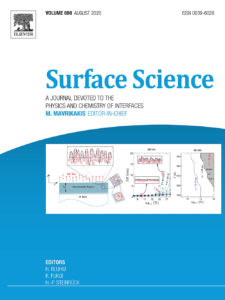 A recent publication by UT-Oak Ridge National Laboratory Governor’s Chair Brian Wirth, UT post-doctoral researcher Dwaipayan Dasgupta, and Professor Dimitrios Maroudas at the University of Massachusetts, Amherst, has been selected for the cover art of Surface Science, volume 698 (2020) 121614.
A recent publication by UT-Oak Ridge National Laboratory Governor’s Chair Brian Wirth, UT post-doctoral researcher Dwaipayan Dasgupta, and Professor Dimitrios Maroudas at the University of Massachusetts, Amherst, has been selected for the cover art of Surface Science, volume 698 (2020) 121614.
The publication entitled “Prediction of temperature range for the onset of fuzz formation in helium-plasma-implanted tungsten,” discusses “fuzz” formation in tungsten following low-energy helium plasma exposure.
Tungsten is the material of choice for plasma facing-components in tokamak fusion reactors, and experimental observations of significant tungsten surface changes and formation of a low density, nanoscale “fuzz” following low-energy helium plasma exposure were first observed in the mid 2000s.
Such surface features impact heat transfer, fuel (deuterium and tritium) recycling, retention and permeation, surface material sputtering and erosion, all of which are detrimental to fusion reactor operation.
This research provides the first mechanistic explanation for the role of temperature in “fuzz” formation, and demonstrates that “fuzz” can grow at temperatures lower than those reported in the literature at sufficiently long plasma exposure periods.